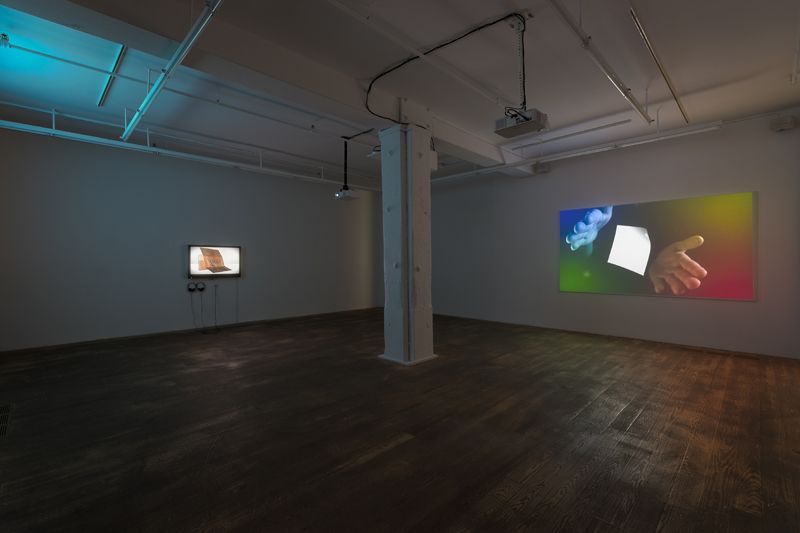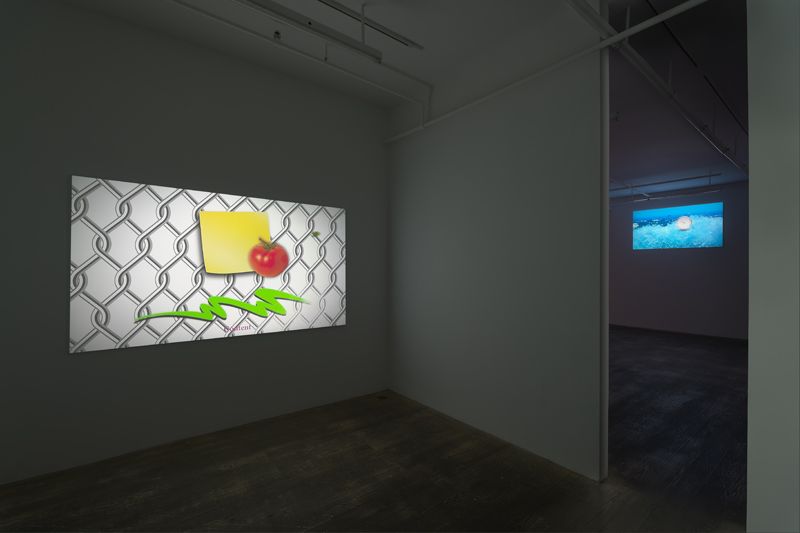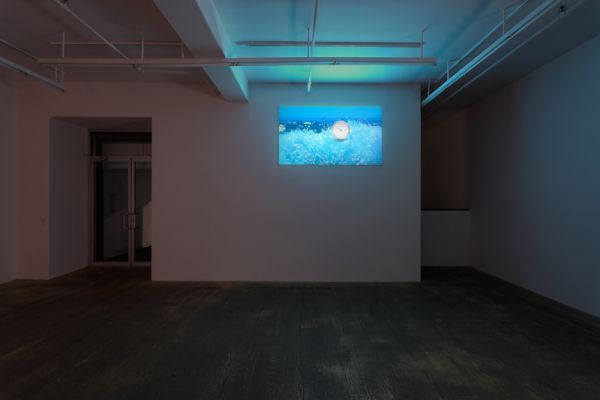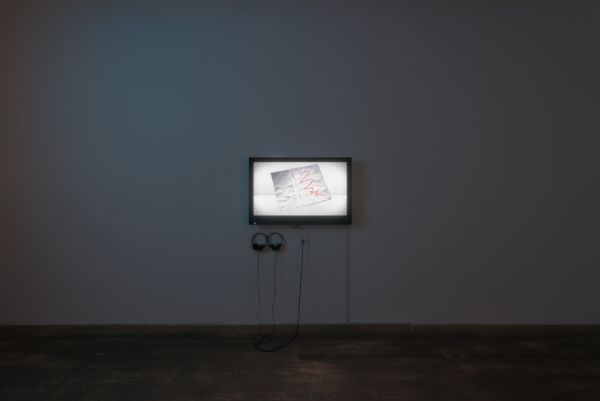Foxy Production presents mbs_fp_090712, Michael Bell-Smith’s third solo exhibition at the gallery. Bell-Smith’s four new single-channel videos use digital tools and the language of commercial design to engage with the histories of experimental film, video art, and painting. His work opens up a dialogue about mark-making, gesture, and poetics; one that both critiques and embraces prevailing communication technologies and their relationship to visual culture.
Bell-Smith mixes stock footage, sound effects, software templates, and digital drawing. With meticulous editing and composition, he produces a richly-layered, non-linear brew. His works induce both disquiet and pleasure: their tempo and the familiarity of their elements intensify both the pressure and relief delivered by everyday, software-derived
moving images.
In Waves Clock, a real-time office clock hovers over a scene of rolling waves. The sublime associations that the seascape evokes are countered by the clock’s functionality and highly digital aesthetic. The scene is rich with possible meaning, yet, paradoxically, unsettlingly blank.
The White Room is a screen-based loop where monochrome computer generated objects, including paper-bags, CD covers, and books, fly into frame, onto a field of white. They are scribbled over with Sharpie-like colored lines before they fly out of frame again. With each round of objects, their surfaces (or skins) are imbued with a different texture. These shifts in texture are echoed in the video’s soundtrack, a sequence of stock jingles, each evoking a different mood and intent. The work’s freeform squiggles, derived from drawing software, are signifiers of creativity, yet they become, in their repetition, as standardized and stylized as the design objects and textures they inscribe.
Magic Hands uses the visual trope of a magician’s hands to introduce a series of stock electronic sound effects and motion graphics. The hand’s impression on the screen has now become central to the process of accessing information: in this video, hands initiate a barrage of sounds, objects, and actions, that, while identifiable in themselves, never coalesce into a definitive statement. It is the hands, center-stage, that unite all the work’s disparate elements, on both a metaphoric and structural level, into a linear system.
De-Employed is an animation that flows with a sequence of wipes, spins, explosions, exposés (multiple image views) and other dynamic screen movements. It is brimming with mesmerizing, identifiable objects, colors, textures, footage, and effects. Single words at the bottom of each new frame form the only constant, running into one another like a series of interconnected haiku. As image and movement wash over the viewer, this oddly constructed text becomes an important focus.
Credits: Installation photography by Mark Woods.
- Valdez, Sarah. “Michael Bell-Smith.” Art in America. Jan. 2013: 104.
- Heinrich, Will. “Sea Spume, Magic Hands and Miniature Worlds: Jeff Shore and Jon Fisher at Derek Eller, Michael Bell-Smith at Foxy Production, Louis Fishman at Cheim & Reid.” The Observer. 8 Oct. 2012: B9
- Calabrese, Nickolas. “Michael Bell-Smith.” Whitehot Magazine. Oct. 2012: Web.
- Wilson, Michael. “Michael Bell-Smith.” Artforum. Nov. 2012: 276-277.
- Droitcour, Brian.”Michael Bell-Smith.” Artforum picks. 24 September. 2012. Web.






